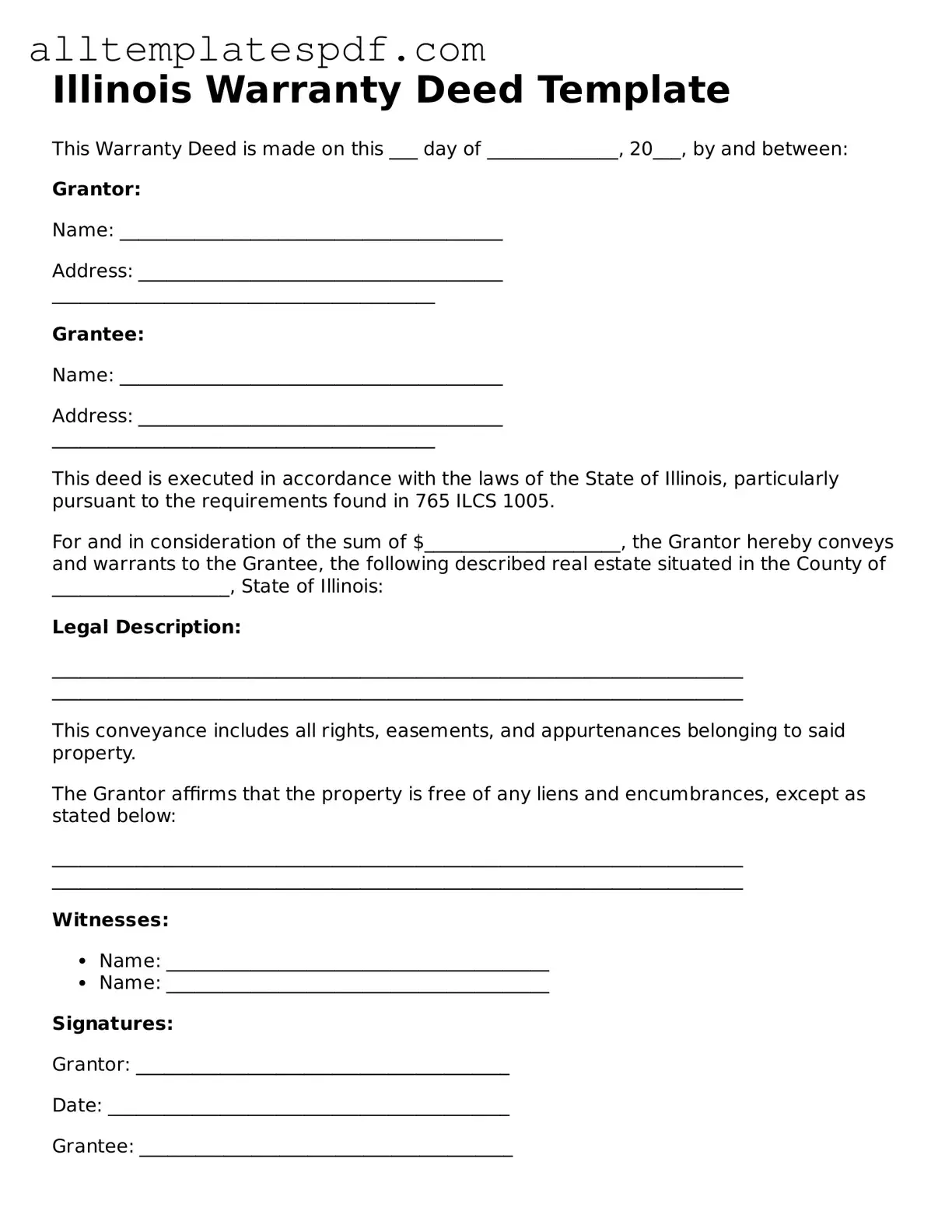Blank Deed Template for the State of Illinois
The Illinois Deed form is a legal document used to transfer ownership of real property from one party to another within the state of Illinois. This form serves as a crucial record of the transaction, ensuring that the new owner has clear title to the property. To facilitate your property transfer, consider filling out the form by clicking the button below.
Open Editor
